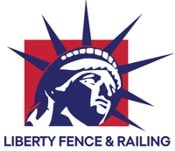
What to Know Before Purchasing Your New Fence or Railing
Planning Helps Make the Most Out of Your Investment
Choosing the right fence or railing can increase your property value, enhance curb appeal, and improve the functionality of your home or business. Whether you’re buying a privacy fence or an enclosure for a new pet, proper planning ensures a successful, timely, and cost-effective installation you (and your neighbors) will be happy with for years to come.
“Part of our mission is to make certain each customer is satisfied with their purchase and the work we do,” says Anthony Strianese, owner, Liberty Fence & Railing. “Every fence, gate, and railing installation is different; we assess each project individually and collaborate closely with our customers to select the style and design that best meets their needs.”
Buying a new fence or railing is an investment. Before you install it:
1. Know Your Goals
The success of any project begins with the end in mind; having a clear purpose for your new fence or railing shapes your choices as you move forward. Things to consider when determining your goals include security needs, privacy concerns, pet confinement, budget, and upkeep effort.
2. Know the Rules
Every municipality has zoning regulations that impact your fencing and railing options. These codes can include height limitations, how close to the property lines a fence can be built, and even if they are allowed on front lawns. There may be further restrictions in place if you are in a historic district, a new development, or part of a neighborhood association. It is important to contact your local zoning department for specific protocols in your area; obtaining all the requirements upfront can potentially save costly changes down the road.
3. Know Your Property
It is essential to know the exact location of the boundary lines for your property before beginning any fencing installation. This assures compliance with all building regulations and can prevent any setbacks. Professional help is best to determine proper boundaries. New York 811 is called to mark the location of known public utilities such as gas and cable/fiber running through the property. It’s important for homeowners to mark oil lines, pool lines, sprinkler systems, waste lines, electrical lines, etc.
4. Know Your Neighbors
Whenever possible, talk to your neighbors about your plans. Fence etiquette guarantees they are not surprised by your decision and you can address any concerns they may have. Confirming your land’s boundary lines is prudent to prevent future disputes. You and your neighbor may choose to have a shared fencing solution, where you would each contribute to the cost; any agreement you make should always be in writing.
New fences or railings can provide many benefits including increased enjoyment of your land and protection and safety. Determining your goals upfront, knowing the rules for your community, verifying your property lines, and discussing plans with neighbors will ensure a functional installation that meets your needs for years to come.
